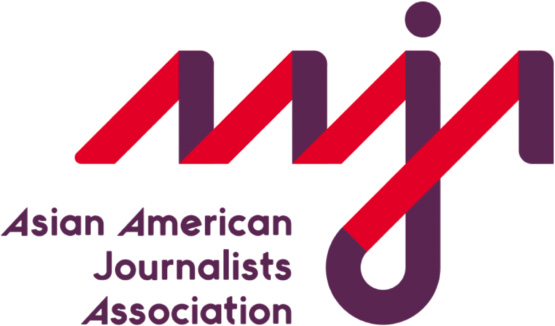Investigative
 At WSJ, women on average made $11,700 annually less than men. We reviewed pay studies at the New York Times, Washington Post, Los Angeles Times and other newspapers to uncover how widespread the disparity is.
At WSJ, women on average made $11,700 annually less than men. We reviewed pay studies at the New York Times, Washington Post, Los Angeles Times and other newspapers to uncover how widespread the disparity is.
Published August 10, 2018

The tumult would spread to every newspaper in the industry, but it began with whispers within the confined spaces of the women’s bathrooms and during off-the-cuff coffee chats at the Wall Street Journal in late 2015.
As Elva Ramirez began speaking to other women at the Journal about their salaries, they discovered a startling pattern—for the exact same roles, they often made many thousands less than their male counterparts.
“We’re doing the exact same job,” Ramirez, a former video producer at the Journal, said of a male coworker. “Everything we did was identical, and he was not my boss, and he did not outrank me. Everything was the same,” except that she made $13,000 less.
A few months later, the paper’s union quantified the extent of the disparity: Women on average made $11,700 annually less than men, its report said.
The union’s study unleashed a firestorm of controversy within the journalism industry. Within the coming weeks and months, other news unions — including those representing workers at the New York Times and Washington Post — published their own pay gap studies. Unions routinely get pay data from employers in order to negotiate labor contracts.
We reviewed pay studies commissioned by unions at the New York Times, Washington Post, Los Angeles Times, Associated Press, Minneapolis Star Tribune and San Francisco Chronicle, in addition to the Journal, and we spoke with 29 journalists across the country to find out what they thought.
All seven studies alleged that men made more than women and that whites made more than people of color.
Some newsroom executives we spoke to called the studies flawed and attributed the differences in pay to differences such as experience.
As unions increasingly call attention to their studies, journalists — who have long been the watchdogs reporting on pay disparity in other industries — are contending that their own workplaces are no better than those they investigate for paying women and minorities less than men and whites.
The union studies generally found that white men earned the most of any demographic and held most senior high-paying positions in the newsroom. Women of color commonly made the least.
The studies were difficult to compare directly. Some unions, such as the Associated Press, declined to share full salary figures, but did provide other measures including percentage differences. Others, like the Washington Post’s union, provided average salaries for each job category by race and gender, but did not provide salary averages by race for the newsroom as a whole. And still others, like the Star Tribune’s union, declined to share detailed study data, citing a confidentiality agreement with management. Instead, it offered a handful of topline findings from their study. Of the seven studies we looked at, all were released in 2016, except the Los Angeles Times’s guild, which was published in April 2018.
Here’s a more detailed breakdown of what each study showed:
Dow Jones (Includes Wall Street Journal, MarketWatch and Barron’s)

Wall Street Journal spokesman Steve Severinghaus said its union’s study did not include “all of the factors relevant for salary analysis” which, he maintains, “impacts the validity of their findings.”
He declined to elaborate, but said the company is conducting a pay review, the results of which will be shared with employees, something the company has done every year since the union did its study.
Severinghaus also added the company has, in the past, identified a small amount of pay discrepancies and adjusted them accordingly.
The Journal’s union says management has declined to answer questions about how they conducted their studies but said recent pay adjustments impacted 31 employees — almost all of them women or minority men who received pay raises ranging from 3 percent to 27 percent.
And as to Severinghaus’ critique of the union’s study, Tim Martell, the union’s executive director replied: “We believe our work in this area, using salary data provided by Dow Jones, speaks for itself.”

A spokeswoman for the New York Times, Danielle Rhoades-Ha, said the management conducted its own look at pay, which said that differences in pay were due to individual factors like expertise, education, experience, job performance, and market demands at time of hire.
“In some cases women make more than men, and in some cases men make more than women, as is the case with employees of color and white employees. We believe these differences are based on valid factors,” she said in an email.

Tracy Grant, a Washington Post managing editor, similarly criticized its union’s study for failing to account for experience.
She said in an email, “I think it’s unwise to look at the simple average, or even the median, because it doesn’t take into account such factors as experience, which any rigorous analysis of the data would include and which is information which The Post provides to the Guild. Furthermore, the broad median figures don’t account for the nature of the positions. Without examining experience and role, it’s hard to draw any conclusions from these numbers.”


Asked about staff concerns regarding unequal pay, a spokeswoman at the Los Angeles Times, Hillary Manning, said managers are actively bargaining with the union “and hope to reach a mutually beneficial contract.”

The editor in chief of the San Francisco Chronicle, Audrey Cooper, said its union’s report was “extremely flawed, as it compared every single newsroom employee, regardless of experience and job category.”
Caroline Grannan, a 64-year-old female copy editor and guild unit chair, said that managers do not think there is a pay gap, forcing the union to consider lodging a complaint with the state.
Associated Press (Note: the union did not provide salary figures.)
A company representative at the Associated Press said the company could not comment due to ongoing union negotiations, which began in August 2017.
Star Tribune (Note: the union did not provide salary figures)
When asked to respond to the union’s numbers, Star Tribune deputy managing editor Colleen Stoxen said, “I would just say that we are paying attention, we’re being vigilant and doing all we can to treat all of our employees fairly.”
While some newsroom leaders criticize the studies for failing to account for experience level, several of the union studies accounted for age or years of service and still found pay disparities.
Many unions said that pay disparities in their newsrooms boil down to management granting larger optional raises to men and whites than women and people of color.
The New York Times’ union found disparities in pay among employees with the same job titles who spent similar years of service at the paper. The Wall Street Journal’s union found pay gaps among employees with similar years of service in their current role. The Los Angeles Times Guild compared pay among employees of the same age range and same job titles. It found that white employees on average made more than their minority peers across all age ranges except within the age bracket of 31 to 40 years.
When you come back and tell me, ‘Well, did you adjust for performance?’ — are you saying that all women and people of color are performing at a lower level?
— Anthony Pesce, Co-Chair of the Los Angeles Times Guild
Anthony Pesce, the co-chair of the Los Angeles Times Guild who helped author the pay study, said that these analyses were not meant to compare individuals to each other, but to look at trends as a whole across demographic groups within the newsroom.
“We’re not comparing one person to another person. We’re comparing dozens of men to dozens of women, in the aggregate,” Pesce said. If an employer asks unions, “‘Well, did you adjust for performance?’ — are you saying that all women and people of color are performing at a lower level?”
Tony Daley, a research economist at the Communications Workers of America, says if newsroom managers are going to dispute unions’ studies, then they should examine “the source of the anxiety which provoked the initial studies.”
“If management is engaging in these studies,” Daley added, “they should absolutely be sharing it with their employees.”
For many minority journalists, entering a large news organization in a major metropolitan market can be intimidating. According to a survey of 661 newsrooms by the American Society of News Editors, only 16.6 percent of employees were minorities in 2017. The nation’s population is about 39 percent minority.
Gene Park, a 37-year-old Asian-American male, who is an audience editor at the Washington Post, worked in a local newsroom in Hawaii for years before making the leap. He did not negotiate before accepting the offer.
“I would’ve taken anything,” Park said. “I would’ve taken a very low salary just to work here.”
Park hasn’t negotiated his salary since because he has been satisfied with the incremental increases in his salary each year, including merit raises.
It sucks to be told how amazing I’m doing and how hard I’m working, where there’s nothing other than just words that are acknowledging that.
— Brittny Mejia, Los Angeles Times reporter
At the Los Angeles Times, race and immigration reporter Brittny Mejia had long been unsuccessful in negotiating a raise. Hours before the pay study was released, Mejia’s editors took her out to lunch as an appreciation gesture for the stories she had been writing. As for the raise, her editors again told her she’d have to wait and see.
“It sucks to be told how amazing I’m doing and how hard I’m working, where there’s nothing other than just words that are acknowledging that,” Mejia said.
Mejia ultimately did get a raise, but only after she began speaking with other employers.
A major factor cited by the Los Angeles Times Guild’s study of the racial pay gap was that many minorities are hired at the newspaper through its Minority Editorial Training Program, which brings them in at a relatively low salary for the company.
While the program brings in people who are minorities, it also creates a pay gap that can persist, creating “a second class of reporters who are brown,” said Soumya Karlamangla, a public health reporter for the Times.
The four staff members at the Los Angeles Times interviewed said they had all considered leaving for a better paying job, despite their preference to stay. They were told that competing job offers were the only way to get a raise.
As conversations at the Wall Street Journal and Los Angeles Times later proved, it’s important for employees to candidly compare salaries with each other if they are to expose pay gaps.
“Especially the young people, we talk to each other about salary,” said Los Angeles Times education reporter Sonali Kohli. “I don’t think there can be equity unless people know what’s happening.”
In many newsrooms, a lack of diversity in top positions can contribute to persistent pay gaps.
At the Minneapolis Star Tribune, where minorities made up only two of the top 20 highest-paying positions in 2016, the issue is retaining young employees of color in the Twin Cities, since they tend to leave for more diverse cities, said Neal Justin, columnist and co-chair of the paper’s union.
“They’re not here long enough to establish a career that may lead to a management or high-profile position that would pay better,” he said of minorities.
Management should make it straightforward for journalists of color to envision the next phase of their career at the Star Tribune, suggests Nicole Norfleet, a 31-year-old business reporter.
She said the process would be more transparent if managers “can sit down with people and ask ‘Where do you want to be in five years?’” but “a lot of times it seems like they’re moving chess pieces.”
Stoxen, deputy managing editor of the Star Tribune, said the paper provides all its journalists additional training for reporting, editing, and community engagement.
Duchesne Drew, former managing editor of operations at the Star Tribune who recruited Norfleet and is now the vice president at a local nonprofit, said that it’s especially important to invest in reporters of color, because “there’s a dearth of us in those roles, and if folks in leadership are not intentional about reaching out to us, we may assume that they are not for us, that they’re not something they see for us.”
The concern about pay equity is also present in nonunion newsrooms. But unlike unions, a group of employees at a nonunion company cannot easily force an employer to share pay data.
At the nonunion Dallas Morning News, reporters recently asked managers to address unequal pay, but the owners haven’t provided the data yet.
Dallas Morning News editor Mike Wilson said in an email managers will conduct a study “of all aspects of pay” in the near future, and added, “we believe we get the best journalists and journalism when our pay is competitive and equitable.”
Nonunion BuzzFeed, a 11-year-old internet media company, was the only organization we spoke to whose executives acknowledged the existence of a pay gap.
BuzzFeed chief executive Jonah Peretti said at a speech in 2016 that the New York-based company conducted a study looking at pay disparities after a female staffer asked if a pay gap existed at a staff meeting. The study found a roughly 10 percent gap across both gender and race, said Lenke Taylor, the company’s head of human resources.
BuzzFeed declined to release the study, but Taylor said that in a matter of just two years, the company has brought those disparities to under 3 percent. The company boosted salaries for an undisclosed number of employees.
“It is the right thing to do,” Taylor said. “Your employees feel confidence, and have a clear understanding of what your pay practices are so that they can focus on the work.”
We reached out to six BuzzFeed reporters for comment. Only one responded back and declined to speak on the record.
In part driven by reporting from America’s news organizations, the pay gap has received more attention in recent years including in industries like tech, which has faced criticism for unequal pay.
Among those pledging to take action is San Francisco-based enterprise software company Salesforce, which notably conducts annual pay studies and has spent $8.7 million to ensure equal pay, according to company spokeswoman Annie Vincent.
Some states have strengthened existing equal pay laws in recent years, providing workers more leverage in their battles for equal pay, says Daniel Eaton, a San Diego-based lawyer and labor expert.
In the last two years, California and Massachusetts have enacted laws barring employers from paying workers of different genders, races or ethnicities differently for substantially similar work. The laws also make it easier for employees to sue over pay gaps.
The irony over fighting for pay equity in newsrooms while reporting on them across a vast number of industries isn’t lost on many reporters.
In 2016, the Wall Street Journal examined pay in more than 400 jobs and “found that women in many elite jobs earn well below men.”
The San Francisco Chronicle also investigated the tech industry’s role in fueling the region’s gendered economic divide.
Yet no other entity holds newsrooms accountable in the same way, says Tre’vell Anderson, a film reporter at the Los Angeles Times and president of the city’s chapter of the National Association of Black Journalists.
At the Los Angeles Times, new owner Dr. Patrick Soon-Shiong has suggested he’s open to addressing unequal pay at the 136-year old paper as he continues talks with the labor union over a new contract.
But with media institutions already facing historic financial challenges, Anderson admits they’re skeptical.
“I need to see raises en mass before I applaud anybody,” they said. “Once the pay inequity situation is taken care of, when we establish a system where the people coming in after us won’t have to deal with pay inequity, then we can have a moment.”
The Associated Press, BuzzFeed News, Dallas Morning News, Los Angeles Times, New York Times, Wall Street Journal and Washington Post are supporters of AAJA Voices.
University of Chicago
University of California, Berkeley
Dartmouth College
Suffolk University
Investigative




Houston 2018





Apply
Become a fellow or editor
Donate
Support our impact
Partner
Work with us as a brand

The Asian American Journalists Association (AAJA) is a membership nonprofit advancing diversity in newsrooms and ensuring fair and accurate coverage of communities of color. AAJA has more than 1,500 members across the United States and Asia.